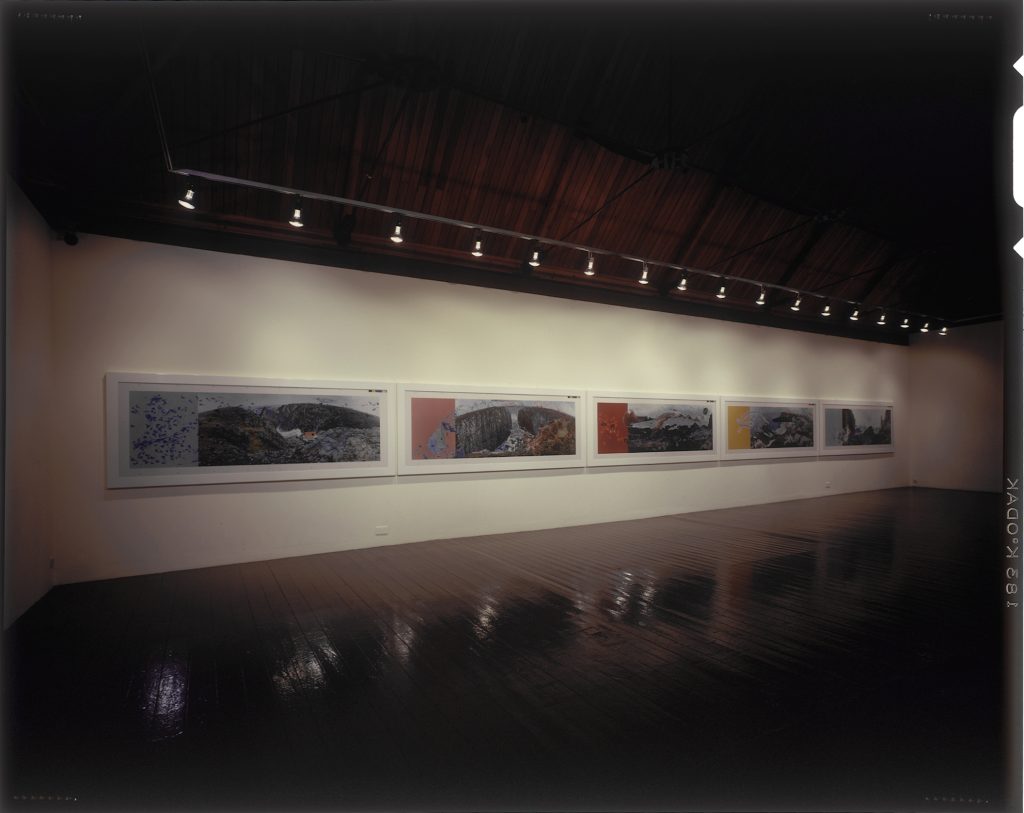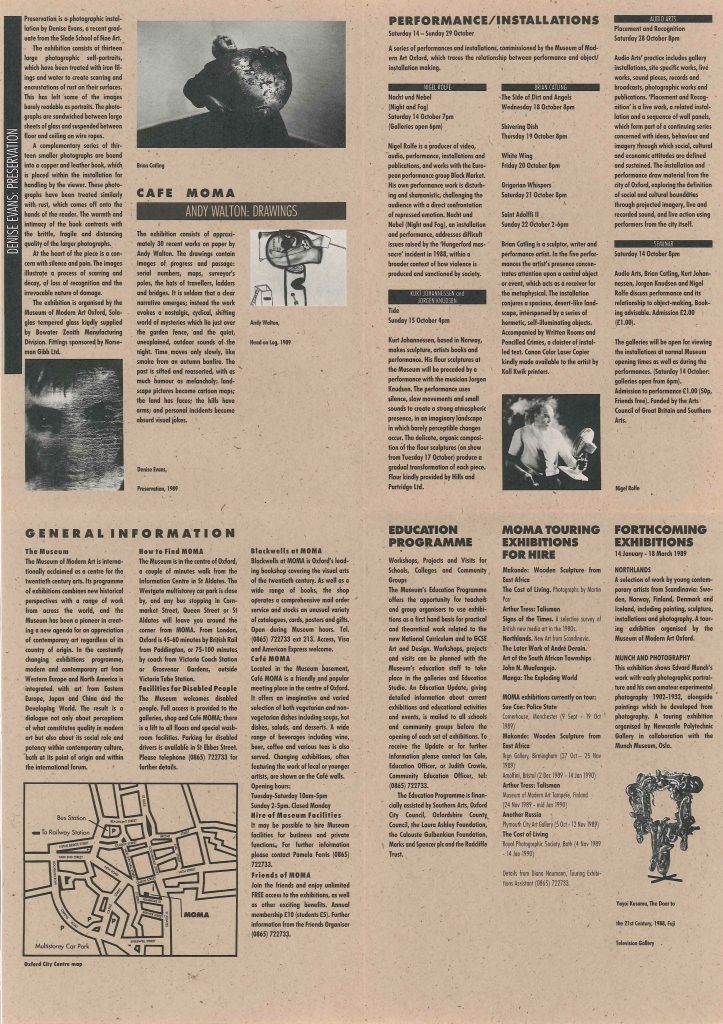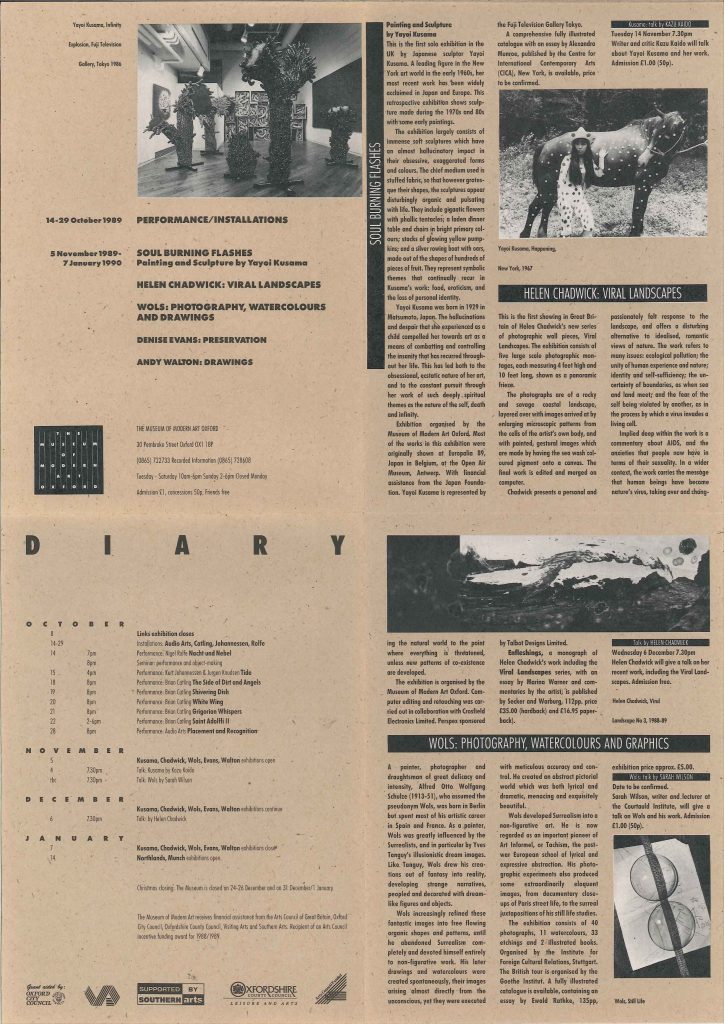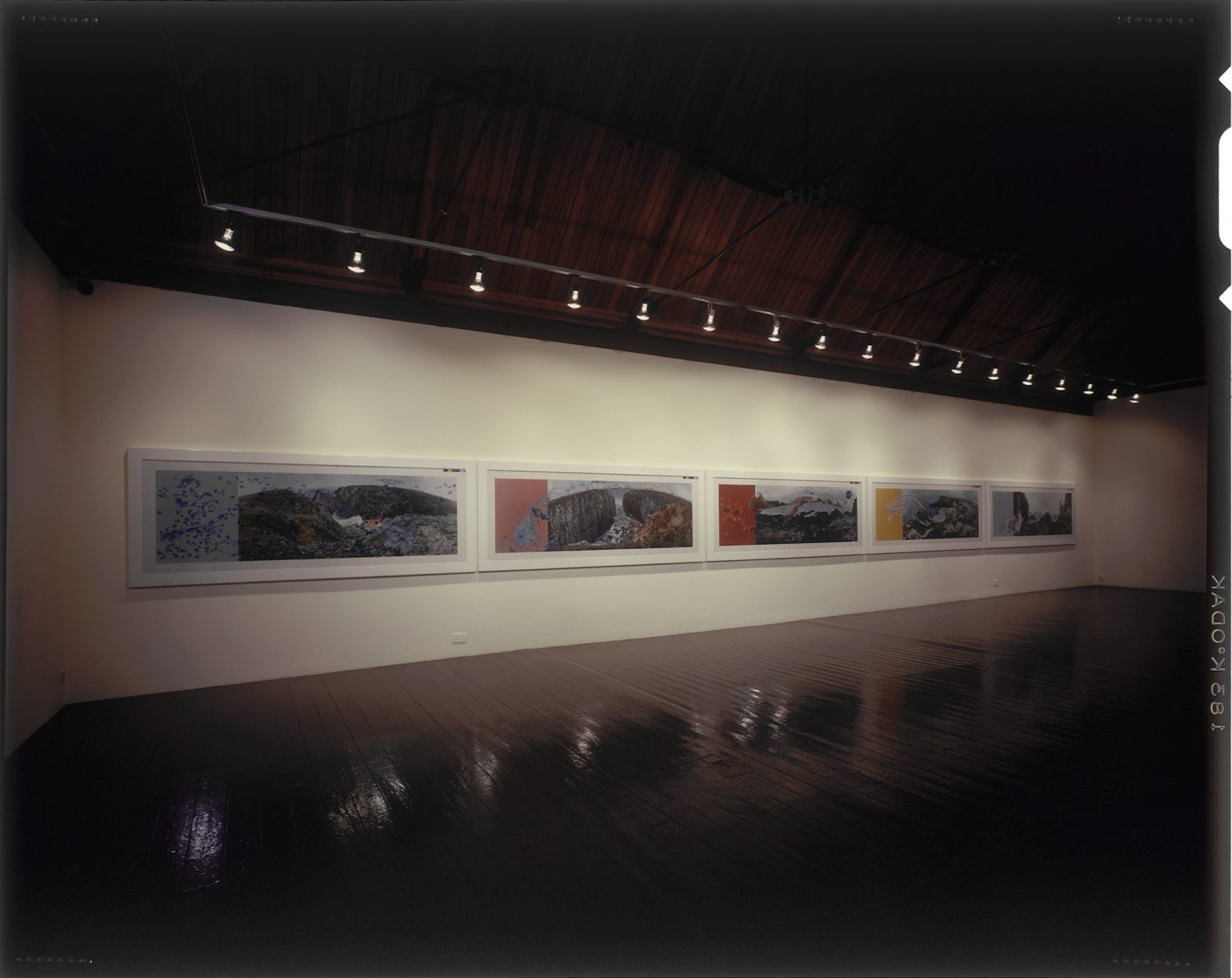Helen Chadwick Viral Landscapes was held at the Museum of Modern Art, Oxford, from 5 November 1989 to 7 January 1990.

Shown as a panoramic frieze measuring four feet in height and 50 feet in length, Viral Landscapes was a brand new series of photographic wall pieces created by British artist Helen Chadwick (1953-1996).
Born in 1953 in Croydon, Surrey, Helen Chadwick was a sculptor, photographer and installation artist who, in 1987, became one of the first female artists to be nominated for the Turner Prize. Over time, Chadwick was recognised for being one of the best known and most exhibited avant-garde artists of her generation.

Viral Landscapes presents Chadwick’s personal and passionate response to the coastal landscape of Pembrokeshire. It is layered with enlarged microscopic patterns made from photographs of cells from her own body, and gestural images made by having the sea wash – coloured pigment painted on to the canvases.
The work refers to many issues including ecological pollution, the unity of human experience and nature, identity and self-sufficiency, the uncertainty of boundaries (as when sea and land meet), and the fear of the self being violated by another, for example when a virus invades a living cell.
In an interview with Cv magazine in December 1989, Chadwick discusses Viral Landscapes, “My idea was to create an image of simultaneous penetration, of the sea and the body – of us and writing by the water within the space no longer outside of us. That composite is the ‘Viral Landscape’. They’re odd, not like anything I’ve ever made before. All my other projects, if you like, establish an ‘interior’. This is the first time the perspective has changed. There are fragments of the inner self, of cells, but they are out in the open, completely vulnerable and free”.

Implied deep within the work is a commentary about AIDS, and the anxieties that people now have in terms of their sexuality. In a wider context, the work carries the message that human beings have become nature’s virus, taking over and changing the natural world to the point where everything is threatened, unless new patterns of co-existence are developed. Chadwick’s intention was that the Viral Landscapes proposes an aesthetic for this.
When Sarah Kent of Time Out Magazine, reviewed the exhibition in November 1989, she noted: “No matter how beguiling she might have found this idyllic scenery, Chadwick was not seduced by its wild beauty into romantic escapism. Instead two crucial issues concerned her, environmental pollution and AIDS”.
